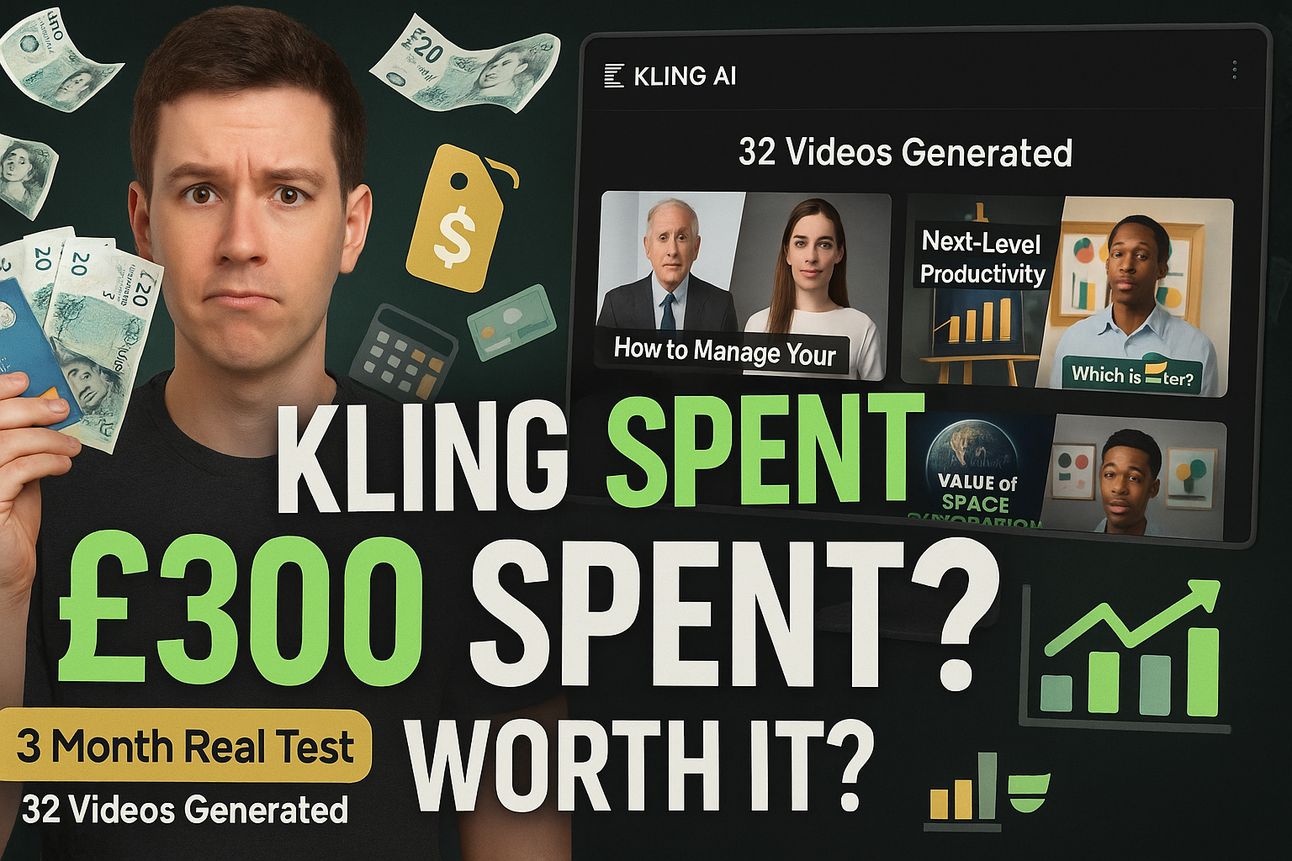Let's Be Honest About This Thing
Right, I've been messing about with Kling AI for three months now. Spent over 300 quid, made more videos than I care to count, and watched enough AI-generated nonsense to last a lifetime. So here's the deal - I'm going to tell you exactly what this thing does, what it doesn't do, and whether it's worth your time.
First things first - Kling AI isn't magic. I know the marketing makes it sound like you can just type "make me a blockbuster" and get the next Marvel film. You can't. What you can get is decent videos that would've cost you thousands a few years ago, but only if you're willing to put in the work.
The truth? About 70% of the time, it'll give you something usable. The other 30%, it's like asking a toddler to explain quantum physics - you get nonsense, but it's confident nonsense.
I'm not here to flog you anything. I've got affiliate links because I'm not stupid, but I'll tell you straight if something's rubbish. And spoiler alert - some of this stuff is proper rubbish.
By the end of this, you'll know if Kling AI is for you or if you should stick to filming your cat with your phone. Both are valid life choices.
What Is Kling AI Really? (Skip the Marketing Fluff)
Kling AI is basically a Chinese-made robot that turns your written descriptions into videos. It's made by the same people who created that TikTok knockoff app that nobody talks about anymore.
Think of it like this - you know how you can describe a scene to a friend and they'll sort of get what you mean? This is like that, except the friend is a computer, doesn't understand sarcasm, and occasionally decides your grandmother should have three arms.
The technical bit: It uses something called a diffusion model. Sounds fancy, right? It's basically pattern recognition on steroids. The AI has watched millions of hours of video and learned to copy patterns. When you ask for "woman walking down street," it mashes together every "woman walking down street" it's ever seen and hopes for the best.
What it actually does well:
Makes people walk around without falling over (usually)
Understands basic camera movements
Doesn't cost as much as hiring a proper film crew
Processes videos in a few minutes instead of hours
What it doesn't do:
Read your mind
Understand physics properly
Make every video perfect
Replace actual filmmaking skills
The reality is, it's a pretty clever bit of software that's about as reliable as British weather - mostly predictable, occasionally brilliant, sometimes completely mental.
Features Breakdown: What You Actually Get
Let's talk about what this thing actually does, not what the sales pitch says it does.
Text-to-Video: The Main Event
You type words, it makes a video. Revolutionary stuff, right? Well, sort of.
When it works:
Simple stuff like "person walking"
Basic camera moves like "zoom in slowly"
Clear descriptions like "sunny day in park"
When it doesn't:
Complex interactions ("two people having heated argument about Brexit")
Abstract concepts ("the feeling of Monday morning")
Anything involving precise timing
Brand-specific requirements ("make it look exactly like our corporate style")
Reality check: You'll get something useful about 7 times out of 10. The other 3 times, you'll wonder if the AI is having a laugh.
Image-to-Video: The Reliable Option
Upload a photo, it makes it move. This actually works better than the text thing because the AI has less room to get creative with your request.
Success stories:
Portrait photos with subtle movement
Landscape shots with gentle motion
Product photos with basic animation
Disaster scenarios:
Blurry photos (garbage in, garbage out)
Complex group shots (everyone starts morphing)
Weird compositions (the AI gets confused)
Pro tip: Use good photos. I know, revolutionary advice, but you'd be surprised how many people upload potato-quality images and expect miracles.
Multi-Elements Editor: The Overhyped Feature
This is supposed to let you edit your videos like a pro. In reality, it's more like using Microsoft Paint on your holiday videos.
What it's actually good for:
Removing obvious mistakes
Basic color tweaks
Simple object removal
What it's not good for:
Complex editing
Precise corrections
Professional-grade work
Fixing fundamental problems
Don't expect Photoshop-level magic here. It's more like a decent spot-removal tool.
The AI Assistant: Your New Best Mate (Sometimes)
There's an AI helper that's supposed to make your prompts better. It's like having a writing assistant who's read every film description ever written but has never actually watched a film.
When it helps:
You're stuck for ideas
Your prompts are too vague
You need technical guidance
When it doesn't:
You have a specific vision
You're doing something creative
You want actual filmmaking advice
Think of it as training wheels. Helpful when you're learning, but you'll outgrow it pretty quickly.
Jason Cohen
AI Cinematic Video Specialist
Scroll-Stopping AI Cinematic Videos
60-second videos that capture attention, build brands, and drive results
Try Kling AI
The AI video generation tool I use for creating cinematic content
✨ My Personal Recommendation
This is what I use daily for client work
Master AI Filmmaking
Learn the techniques behind viral AI video creation
🔥 Limited Time: $5/month
Price increases to $50/month soon!
Why Work With Me?
Quick Turnaround
60-second videos that pack maximum impact
Proven Results
Videos designed to stop scrolling and drive action
AI Expertise
Cutting-edge tools and techniques
© 2025 Jason Cohen | MrAIVideo.com | AI Cinematic Video Specialist
Pricing: What This Will Actually Cost You
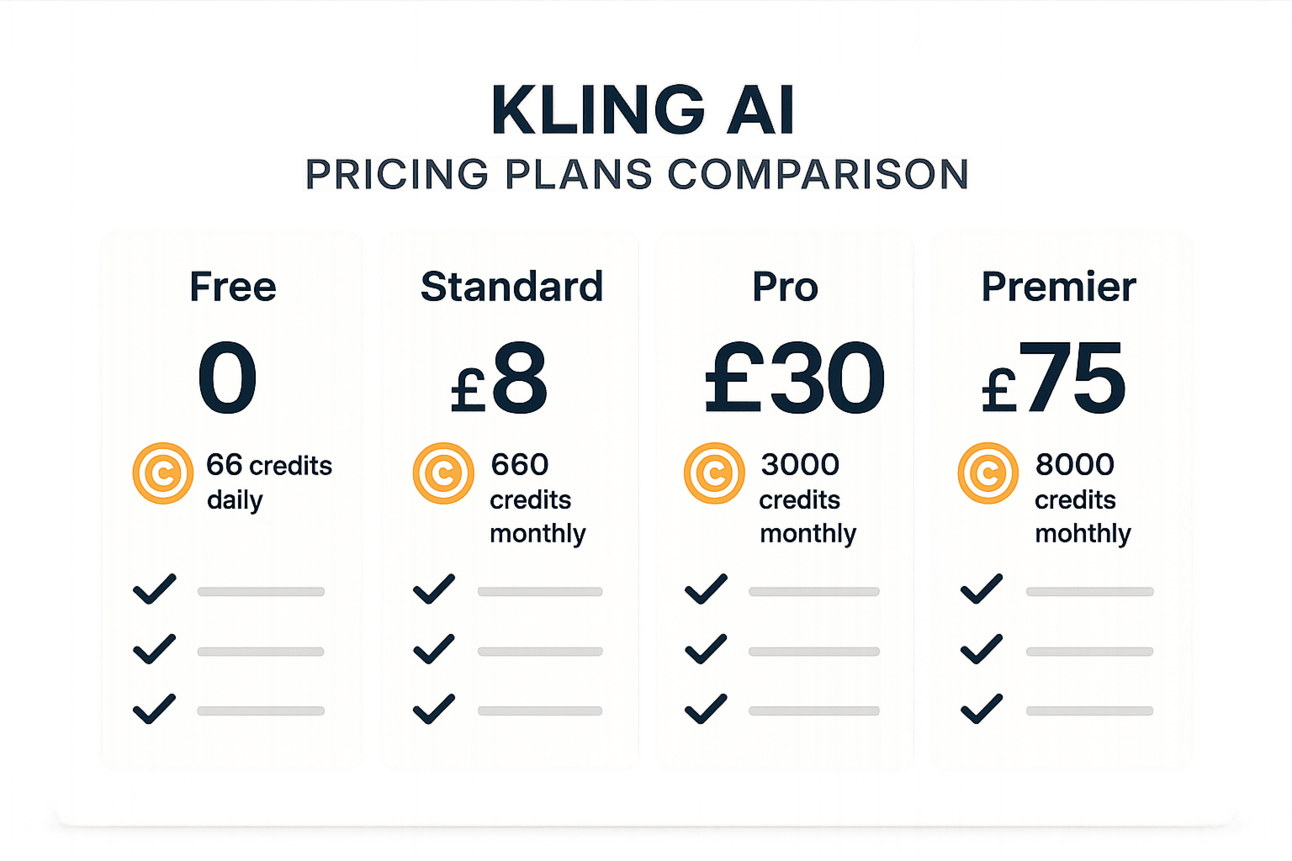
Let's talk money, because this is where most people get a shock.
66 credits daily, use them or lose them. Sounds generous until you realize a single video costs 35-50 credits. So you get one video a day, maybe two if you're lucky.
Reality: It's enough to see if you like the taste, but not enough for a proper meal.
Standard Plan: £8/month
660 credits monthly, no watermarks, proper quality. You'll get about 8-12 videos if you're careful.
Reality: Fine for dabbling, rubbish for serious work.
Pro Plan: £30/month
3,000 credits, all the features, priority processing. This is where it gets interesting - about 40-60 videos monthly.
Reality: The sweet spot for anyone serious about this.
Premier Plan: £75/month
8,000 credits, everything unlocked, VIP treatment. You're looking at 100+ videos monthly.
Reality: For agencies or people with more money than sense.
Here's the bit that'll sting: failed generations cost you full credits. That's like paying for a meal that never arrives. And trust me, about 20-30% of your attempts will fail spectacularly.
Real monthly costs:
Casual user: £15-25 (including the inevitable top-ups)
Regular creator: £40-60 (Pro plan plus the "just one more try" purchases)
Heavy user: £80-120 (Premier or Pro with extras)
The credit trap: You'll burn through credits faster than you think. Every experiment, every "let me try this slightly different," every failure - it all adds up.
Value comparison: A single decent video from a freelancer costs £200-500. A day's shoot with a proper crew? £2,000-5,000. So even at £60/month, you're saving money if you need regular video content.
Learning This Thing: The Real Timeline
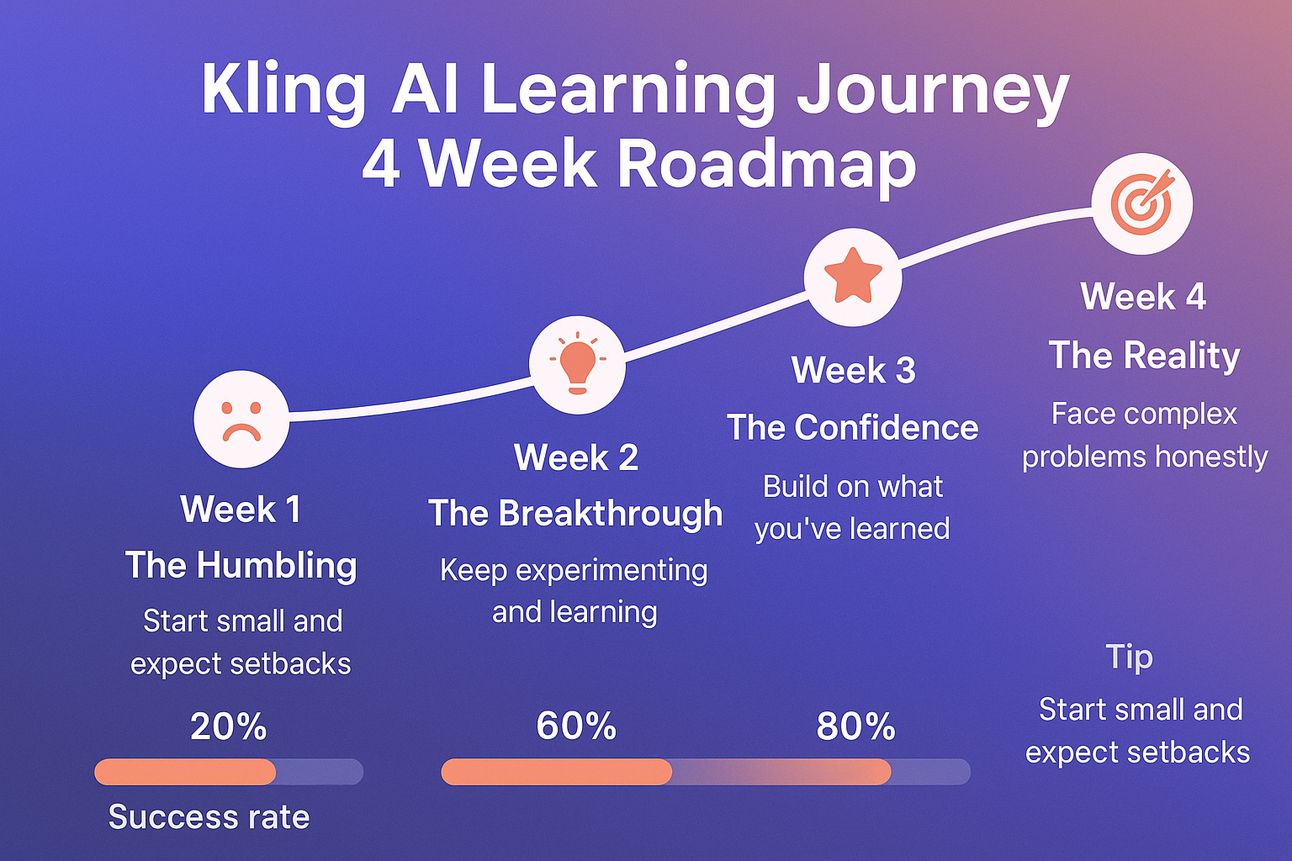
Forget the "create amazing videos in minutes" nonsense. Here's what actually happens:
Week 1: The Humbling
You'll create mostly garbage. Your first attempts will look like they were made by someone having a stroke. This is normal. The AI doesn't think like you do.
What you'll learn:
The interface doesn't make sense
Your first 20 videos will be terrible
Credits disappear faster than free beer
The AI has its own weird logic
Goal: Generate anything that doesn't make people laugh at you.
Week 2: The Breakthrough
Suddenly, you'll get one good video. Then another. You'll start to understand the AI's weird language.
What clicks:
Simple prompts work better
The AI likes certain phrases
Some concepts just don't work
Patience is not optional
Goal: Get usable results 6 times out of 10.
Week 3: The Confidence
You'll start feeling clever. Your videos will look decent. You'll begin to develop your own style.
What develops:
Your own prompt templates
Understanding of what works
Strategies for common problems
Realistic expectations
Goal: Consistent quality, predictable results.
Week 4: The Reality
You'll realize this is a tool, not magic. Like any tool, it requires skill to use well.
What you master:
Efficient workflows
Credit management
Quality control
Professional output
Goal: Create videos that don't scream "made by AI."
The Truth About Mastery
Most people expect instant gratification. They want to type "make me a viral video" and retire to the Bahamas. That's not how this works.
Real mastery takes 2-3 months of regular use. Not because the tool is complicated, but because you need to learn how to communicate with an AI brain that thinks in patterns, not concepts.
Prompt Engineering: Talking to the Robot
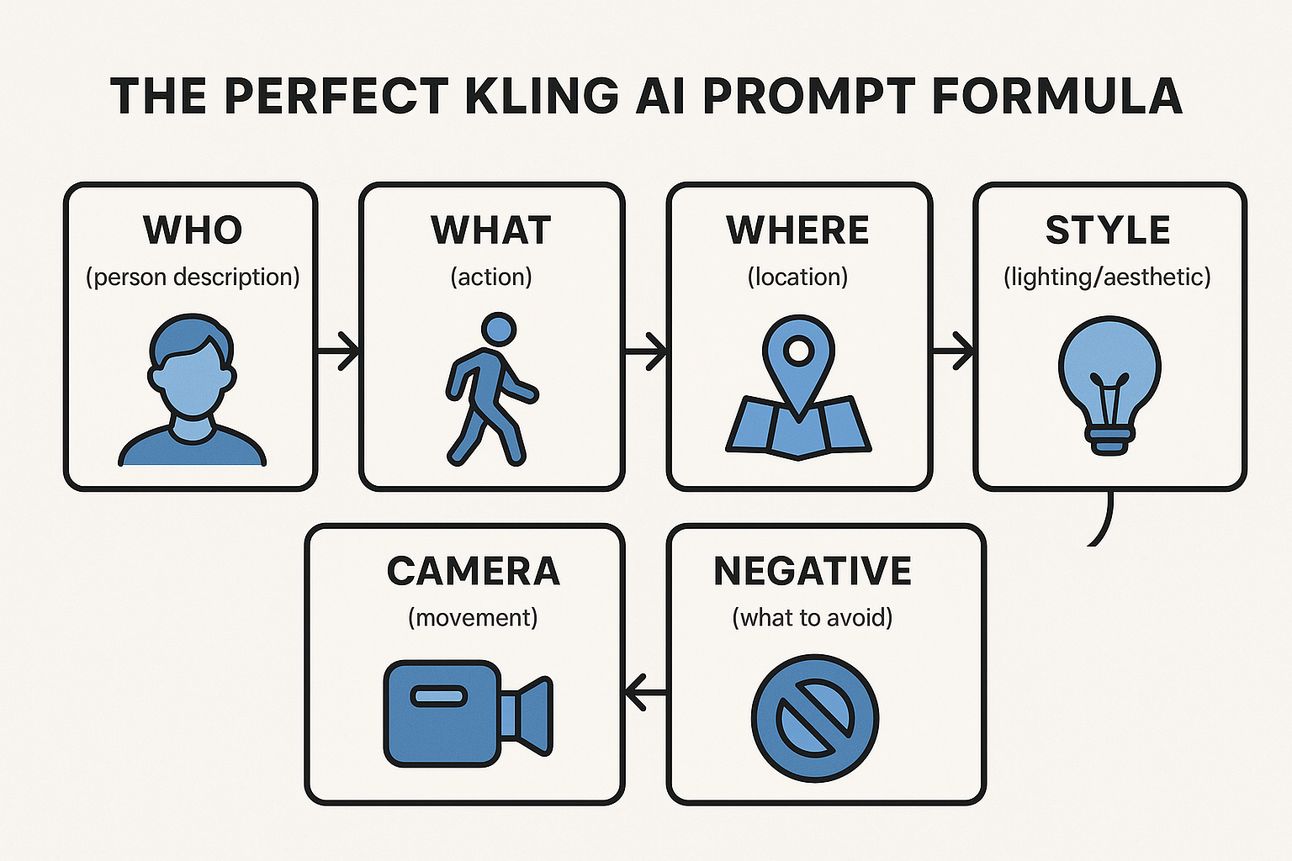
This is where most people fail. They think they can talk to the AI like they're describing a scene to a mate. You can't. The AI is brilliant but literal-minded, like a very clever person with autism.
The Formula That Actually Works
[Who] + [What they're doing] + [Where] + [How the camera moves] + [What it looks like] + [What you don't want]
Example: "Young woman in red coat walking confidently down busy London street, camera follows behind her, golden hour lighting, cinematic style, --negative blurry face, extra limbs"
Describing People: Be Specific Without Being Creepy
Good: "Professional businesswoman in her 30s" Bad: "Hot woman with perfect body" Good: "Elderly man with grey beard" Bad: "Old guy who looks wise"
The AI doesn't understand subjective terms like "beautiful" or "wise." It needs concrete descriptions.
Actions That Work vs. Actions That Don't
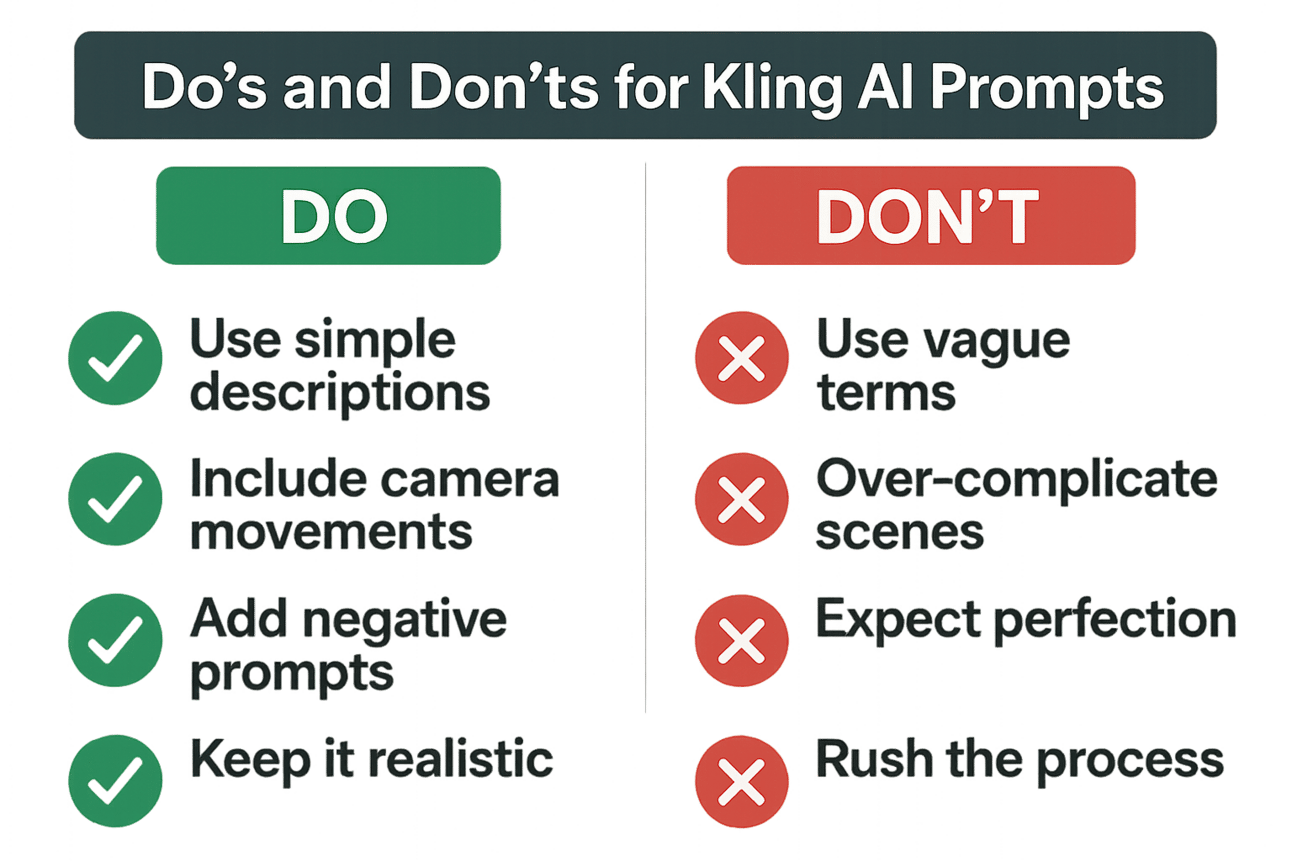
Reliable actions:
Walking, sitting, standing
Turning head, looking around
Picking up objects
Simple gestures
Unreliable actions:
Dancing (unless it's very simple)
Complex sports movements
Detailed facial expressions
Precise timing requirements
The rule: If you can't describe it in one simple sentence, the AI probably can't do it.
Camera Movements: Keep It Simple
What works:
"Camera slowly zooms in"
"Static shot"
"Camera follows behind"
"Slow pan left to right"
What doesn't:
"Dynamic drone shot spiraling upward"
"Handheld documentary style"
"Complex tracking shot"
"Multiple camera angles"
The truth: The AI understands basic camera movements but gets confused by anything that sounds like it came from a film school textbook.
Lighting: Describe What You See, Not What You Want
Effective: "Golden hour lighting," "Soft natural light," "Bright office lighting" Ineffective: "Moody cinematic lighting," "Professional studio setup," "Artistic shadows"
The AI works better with simple, descriptive terms than with artistic concepts.
The Negative Prompt: Your Secret Weapon
This is where you tell the AI what not to do. It's like having a conversation with a toddler - sometimes you need to be very specific about what's off-limits.
Essential negatives:
"blurry, distorted, extra limbs"
"multiple faces, duplicate people"
"text, watermarks, logos"
"low quality, pixelated"
Advanced negatives:
"jittery movement, unnatural motion"
"inconsistent lighting"
"cartoon style" (if you want realism)
"overexposed, underexposed"
Common Mistakes That Kill Prompts
Too vague: "Make something cool" Too specific: "Shot on RED camera with 85mm lens at f/1.4 with professional color grading" Too demanding: "Create a viral video that will get millions of views" Too complex: "Multiple people having detailed conversation while complex action happens in background"
The sweet spot: Specific enough to get what you want, simple enough for the AI to understand.
Real Results: What Actually Happens
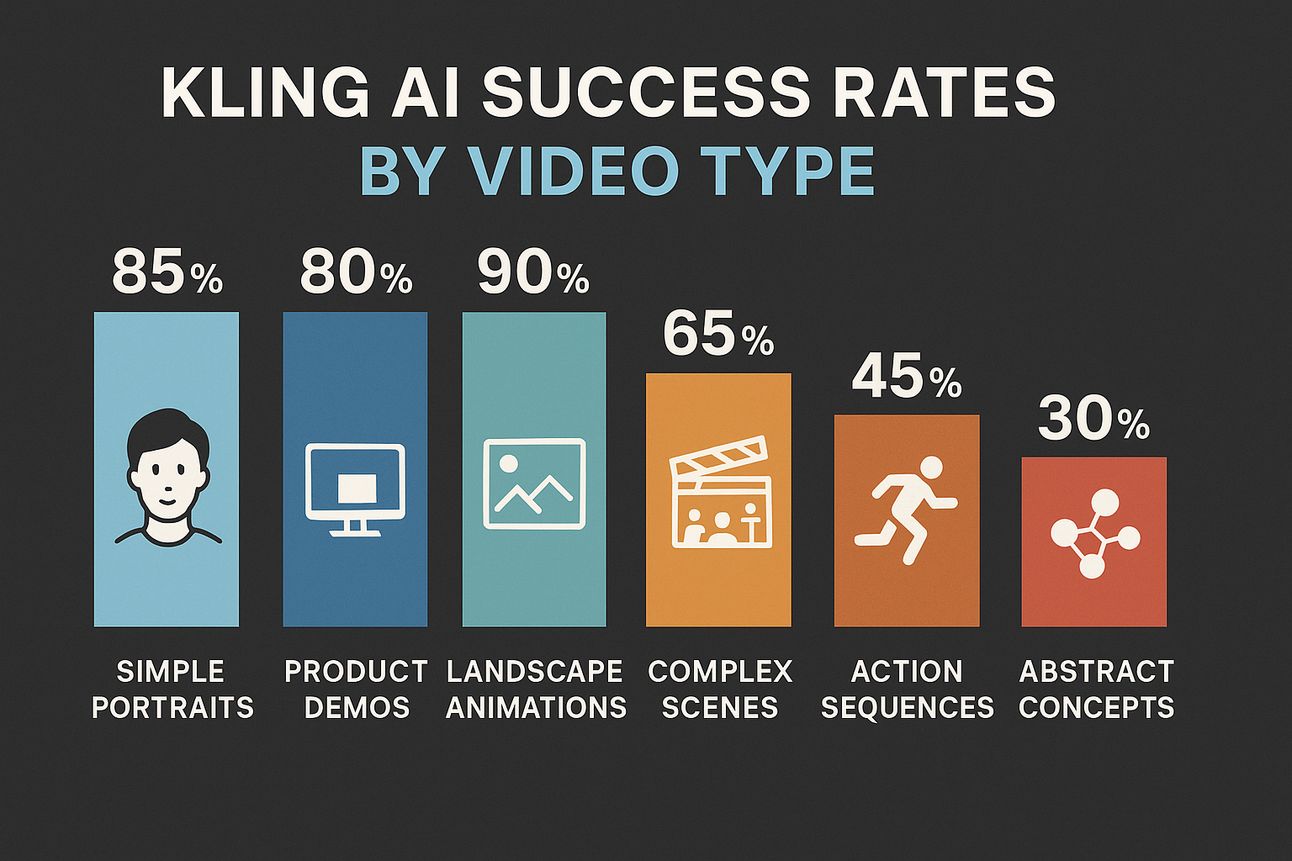
Let me tell you what really happened over three months of daily use, not the cherry-picked highlights you see in marketing materials.
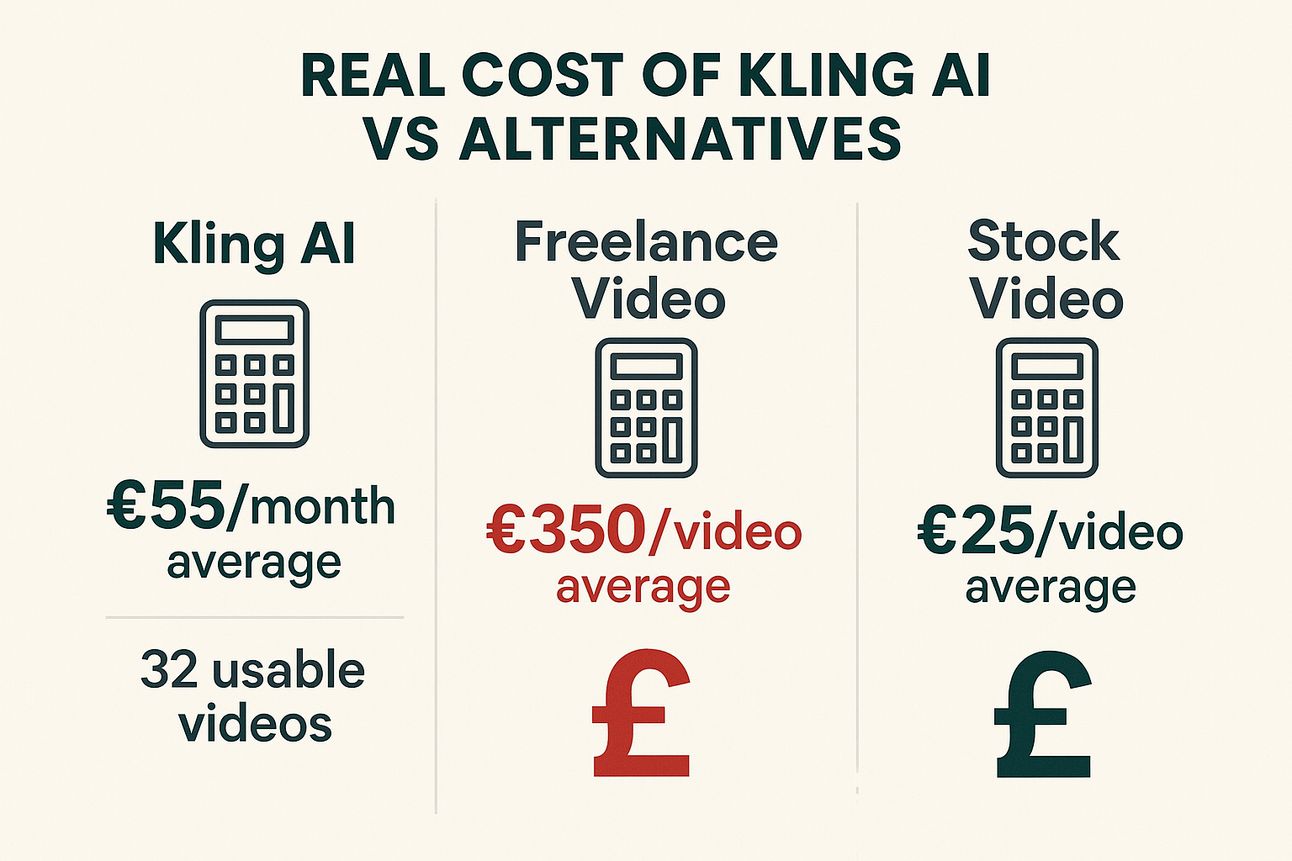
The Good Days
About 30% of the time, everything works perfectly. The AI understands your prompt, generates quickly, and produces something that makes you think "bloody hell, that's actually good."
Best results:
Simple character shots: 85% success rate
Basic product demos: 80% success rate
Landscape animations: 90% success rate
Example success: "Professional woman in suit walking confidently through modern office, camera follows, natural lighting" - worked perfectly 8 times out of 10.
The Bad Days
About 20% of the time, nothing works. The AI seems to have forgotten how physics works, faces look like melted wax, and you start questioning your life choices.
Worst results:
Complex interactions: 30% success rate
Abstract concepts: 25% success rate
Multiple people: 40% success rate
Example disaster: "Two business people having animated discussion" - resulted in face-morphing nightmares and impossible body positions.
The Mediocre Middle
The remaining 50% of the time, you get something usable but not spectacular. It's good enough for social media, not good enough for your showreel.
Average results:
Decent but not outstanding
Minor issues you can live with
Usable with low expectations
Better than nothing, not as good as hoped
Cost Reality Check
Monthly spend: £55 average (Pro plan plus extras) Videos generated: 47 attempts Usable videos: 32 (68% success rate) Cost per usable video: £1.72
Comparison:
Stock video: £15-50 per clip
Freelancer: £200-500 per video
Your time: Priceless (or worthless, depending on your perspective)
Time Investment
Learning phase: 2-3 hours daily for first month Operational phase: 30-60 minutes daily Per video: 5-15 minutes including revisions
The reality: It's not instant. You'll spend time learning, experimenting, and occasionally swearing at your computer.
Competitors: How It Stacks Up
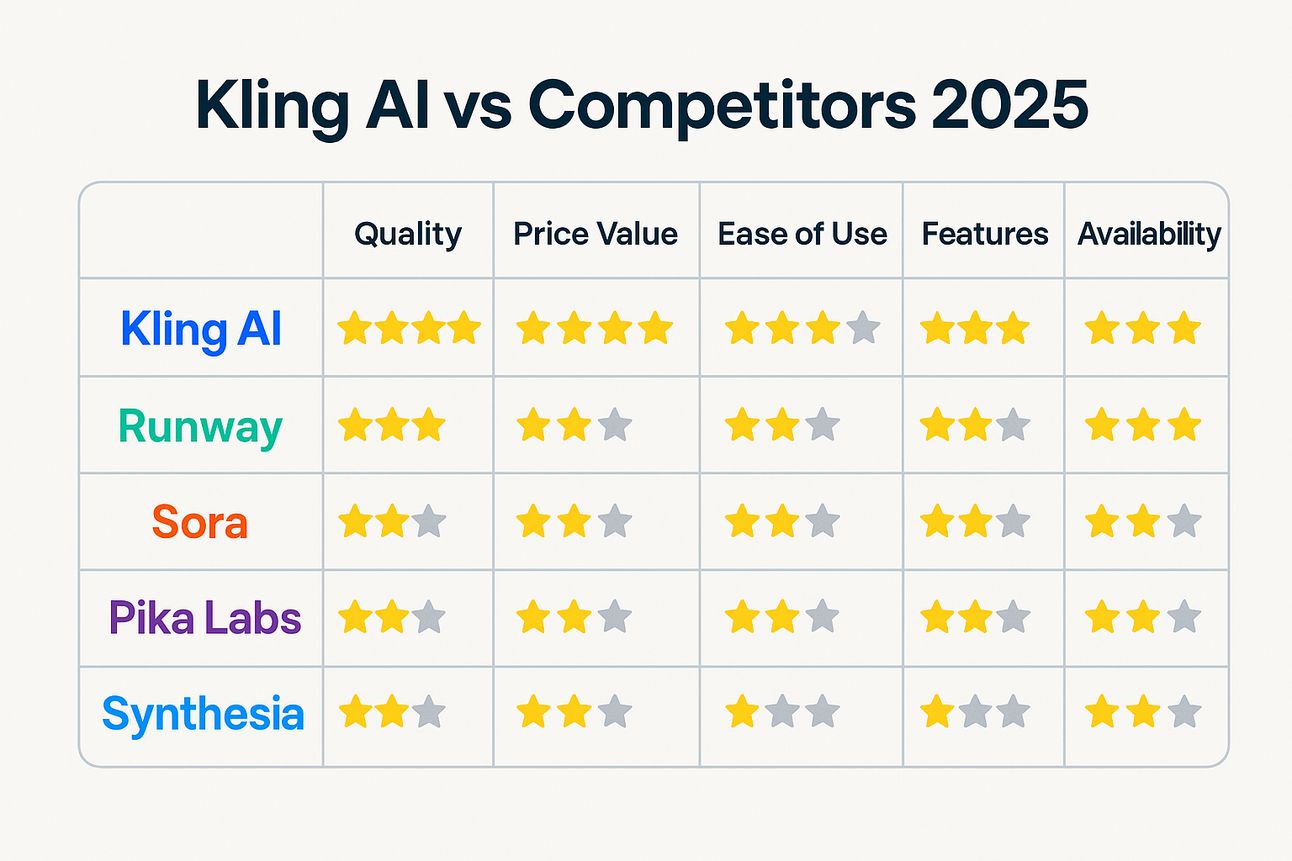
Let's be honest about the competition, because there are other options out there.
Kling AI vs. Runway
Runway: Better quality, higher cost, more pretentious user base Kling: Better value, decent quality, more accessible
The verdict: Runway if you're making art, Kling if you're making content.
Kling AI vs. Sora
Sora: Mind-blowing quality when it works, impossible to get access to Kling: Available now, good enough quality, predictable costs
The verdict: Sora is the Ferrari you can't buy, Kling is the reliable Honda you can actually drive.
Kling AI vs. Pika Labs
Pika: Easier to use, more community-driven, less consistent Kling: More professional, better features, steeper learning curve
The verdict: Pika for casual fun, Kling for serious work.
The Honest Ranking
Best overall value: Kling AI
Best pure quality: Runway (if you can afford it)
Best for beginners: Pika Labs
Best for showing off: Sora (if you can access it)
Best for specific needs: Synthesia (talking heads only)
Limitations: What'll Drive You Mad
Time for the reality check. Here's what'll make you want to throw your computer out the window:
Generation Failures: The Credit Thief
About 25% of your attempts will fail completely. The system just says "nope" and keeps your credits. It's like paying for a meal that never arrives, except you can't complain to the manager.
When it happens most:
Complex prompts
Peak hours
When you're in a hurry
When you really need it to work
How to cope: Accept it as part of the process and budget accordingly. Getting angry won't bring your credits back.
Physics Violations: When AI Gets Creative
The AI occasionally decides that gravity is optional, objects can exist in multiple places, and people can have extra limbs for fun.
Common disasters:
People walking through walls
Objects appearing and disappearing
Faces morphing mid-video
Impossible camera movements
Management strategy: Stick to simple, realistic scenarios. The AI handles "woman walking" better than "woman performing interpretive dance while juggling."
The Goldilocks Problem
Every prompt needs to be just right. Too vague and you get generic rubbish. Too specific and the AI gets confused. Finding the sweet spot is like tuning a radio in a thunderstorm.
Too vague: "Make something cool" Too specific: "Professional cinematographer using RED Epic camera with 85mm lens creating dramatic chiaroscuro lighting while maintaining perfect focus throughout a complex tracking shot" Just right: "Woman in red coat walking down street, camera follows, golden hour lighting"
Credit Anxiety
The credit system creates a weird psychological pressure. Every failed attempt feels like money down the drain. You start second-guessing yourself and playing it safe instead of experimenting.
The trap: You become so worried about wasting credits that you stop being creative.
The solution: Accept that experimentation costs money. Budget for failures like you budget for coffee.
Success Stories and Disasters
Let me share some real examples of what works and what doesn't.
Success Story: Product Demo
Prompt: "Sleek smartphone rotating slowly on white background, professional lighting, clean aesthetic"
Result: Perfect product shot, used it for client presentation, saved £300 on photography.
Why it worked: Simple object, clear environment, realistic movement.
Disaster: Team Meeting
Prompt: "Five business people having animated discussion around conference table, dynamic camera movement"
Result: Faces morphing into each other, people appearing and disappearing, general chaos.
Why it failed: Too many people, complex interactions, unrealistic expectations.
Surprise Success: Emotional Moment
Prompt: "Elderly man sitting on park bench looking thoughtful, gentle breeze, afternoon light"
Result: Genuinely moving 10-second clip that captured real emotion.
Why it worked: Simple setup, clear mood, achievable movement.
Expensive Failure: Brand Video
Prompt: "Professional corporate team collaborating on innovative project, modern office environment, inspiring music"
Result: Generic stock footage nightmare with uncanny valley faces.
Why it failed: Too many corporate buzzwords, no specific visual direction.
The lesson: The AI doesn't understand business concepts. It needs concrete, visual descriptions.
Advanced Tips: What I Wish I'd Known
After three months of daily use, here's what I wish someone had told me from the start:
The 5-Second Rule
Start with 5-second videos. They're cheaper, fail less often, and let you experiment without breaking the bank. Work up to 10 seconds once you've mastered the basics.
The Image-to-Video Cheat
When text-to-video fails, use image-to-video. Generate or find a good static image, then animate it. Much more predictable results.
The Prompt Library
Keep a document of prompts that work. Don't rely on memory. When you find something that works, save it and build variations.
The Batch Strategy
Don't generate one video at a time. Plan 3-5 generations based on similar prompts. You'll learn faster and use credits more efficiently.
The Off-Peak Advantage
Generate during off-peak hours (late evening, early morning). Faster processing, fewer failures, better results.
The Negative Prompt Power
Always use negative prompts. They're more important than positive ones. The AI needs to know what not to do.
The Style Consistency Trick
If you need multiple videos in the same style, use the same lighting and camera descriptions in every prompt. The AI will maintain visual consistency.
The Future: What's Coming
Based on updates and industry trends, here's what I expect:
Near Term (Next 6 Months)
Longer video generation (15-30 seconds)
Better character consistency
More aspect ratio options
Improved mobile interface
Medium Term (6-12 Months)
4K resolution options
Audio generation integration
Better editing tools
API access for developers
Long Term (1-2 Years)
Minute-long videos
Photorealistic quality
Real-time generation
Integration with other creative tools
The Competition Response
Expect Runway, Pika, and others to respond with similar features. The AI video space is moving fast, and nobody wants to be left behind.
Pricing Predictions
Costs will likely decrease as competition increases and technology improves. But demand is also growing, so don't expect massive price drops.
Final Verdict: Is It Worth It?
After three months, 300+ videos, and £200+ spent, here's my honest assessment:
Yes, it's worth it if:
You create content regularly
You're willing to learn and experiment
You understand its limitations
You need affordable video content
You enjoy new technology
No, it's not worth it if:
You expect perfection immediately
You need precise, brand-specific content
You're not willing to invest time learning
You only need occasional videos
You prefer human-created content
The bottom line: Kling AI is a useful tool that can save you time and money, but it's not magic. It requires skill, patience, and realistic expectations.
It's like having a talented but unpredictable assistant. Sometimes they produce brilliant work, sometimes they disappoint you, but overall they make your life easier.
My recommendation: Try the free plan first. If you find yourself using all your daily credits and wanting more, upgrade to Standard. If you're still using it after a month, go Pro.
Don't expect miracles, but do expect to be occasionally impressed. And remember - it's just a tool. The creativity still comes from you.
Now stop reading and go make some videos. Or don't. I'm not your boss.
Want to try Kling AI? Get started here (Yes, that's my affiliate link. No, I won't judge you if you don't use it.)
This guide is based on real experience with Kling AI from December 2024 to March 2025. Results may vary. Your mileage may differ. Side effects may include credit addiction and an irrational belief that AI can read your mind.
Jason Cohen
AI Cinematic Video Specialist
Scroll-Stopping AI Cinematic Videos
60-second videos that capture attention, build brands, and drive results
Try Kling AI
The AI video generation tool I use for creating cinematic content
✨ My Personal Recommendation
This is what I use daily for client work
Master AI Filmmaking
Learn the techniques behind viral AI video creation
🔥 Limited Time: $5/month
Price increases to $50/month soon!
Why Work With Me?
Quick Turnaround
60-second videos that pack maximum impact
Proven Results
Videos designed to stop scrolling and drive action
AI Expertise
Cutting-edge tools and techniques
© 2025 Jason Cohen | MrAIVideo.com | AI Cinematic Video Specialist

